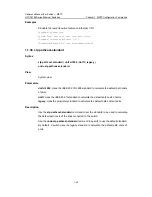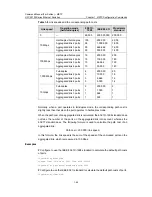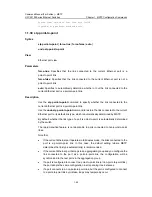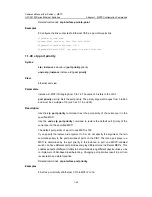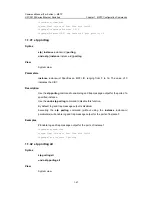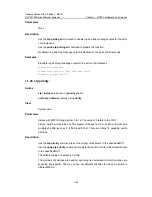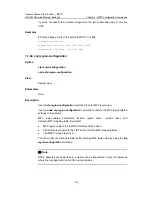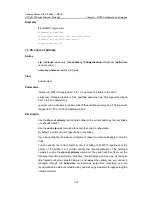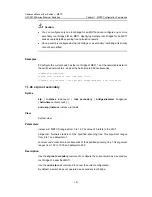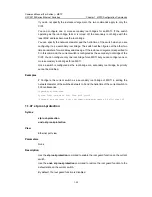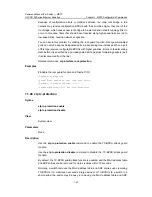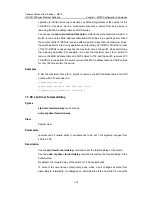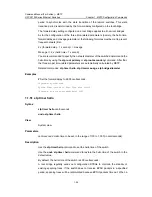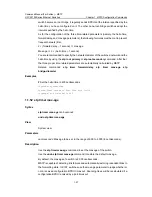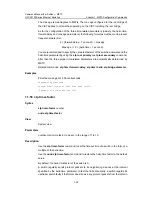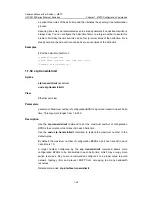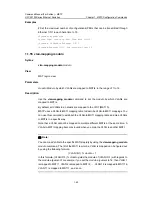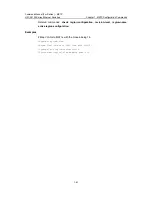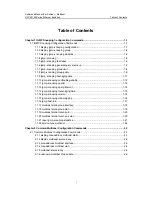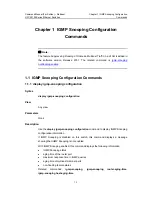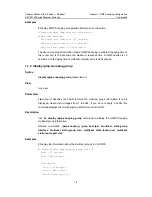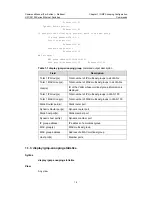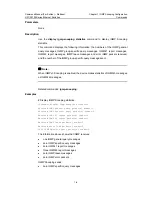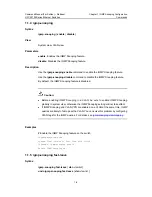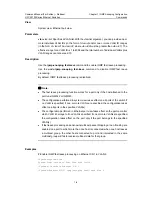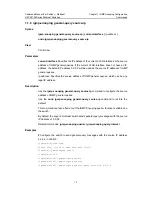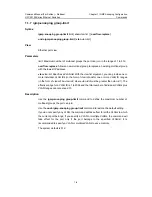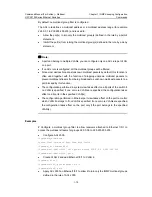
Command Manual (For Soliton) – MSTP
H3C S3100 Series Ethernet Switches
Chapter 1 MSTP Configuration Commands
1-57
switch becomes a root bridge, it regularly sends BPDUs at the interval specified by the
hello time you have configured on it. The other none-root-bridge switches adopt the
interval specified by the hello time.
As for the configuration of the three time-related parameters (namely, the hello time,
forward delay, and max age parameters), the following formulas must be met to prevent
frequent network jitter.
2 × (forward delay – 1 second) >= max age
Max age >= 2 × (hello time + 1 second)
You are recommended to specify the network diameter of the switched network and the
hello time by using the
stp root primary
or
stp root secondary
command. After that,
the three proper time-related parameters are automatically calculated by MSTP.
Related commands:
stp timer forward-delay
,
stp timer max-age
,
stp
bridge-diameter
.
Examples
# Set the hello time to 400 centiseconds.
<Sysname> system-view
System View: return to User View with Ctrl+Z.
[Sysname] stp timer hello 400
1.1.52 stp timer max-age
Syntax
stp timer max-age
centi-seconds
undo stp
timer max-age
View
System view
Parameters
centi-seconds
: Max age to be set, in the range of 600 to 4,000 (in centiseconds).
Description
Use the
stp timer max-age
command to set the max age of the switch.
Use the
undo stp timer max-age
command to restore the default max age.
By default, the max age of a switch is 2,000 centiseconds.
MSTP is capable of detecting link failures and automatically restoring redundant links to
the forwarding state. In CIST, switches use the max age parameter to judge whether or
not a received configuration BPDU times out. Spanning trees will be recalculated if a
configuration BPDU received by a port times out.

